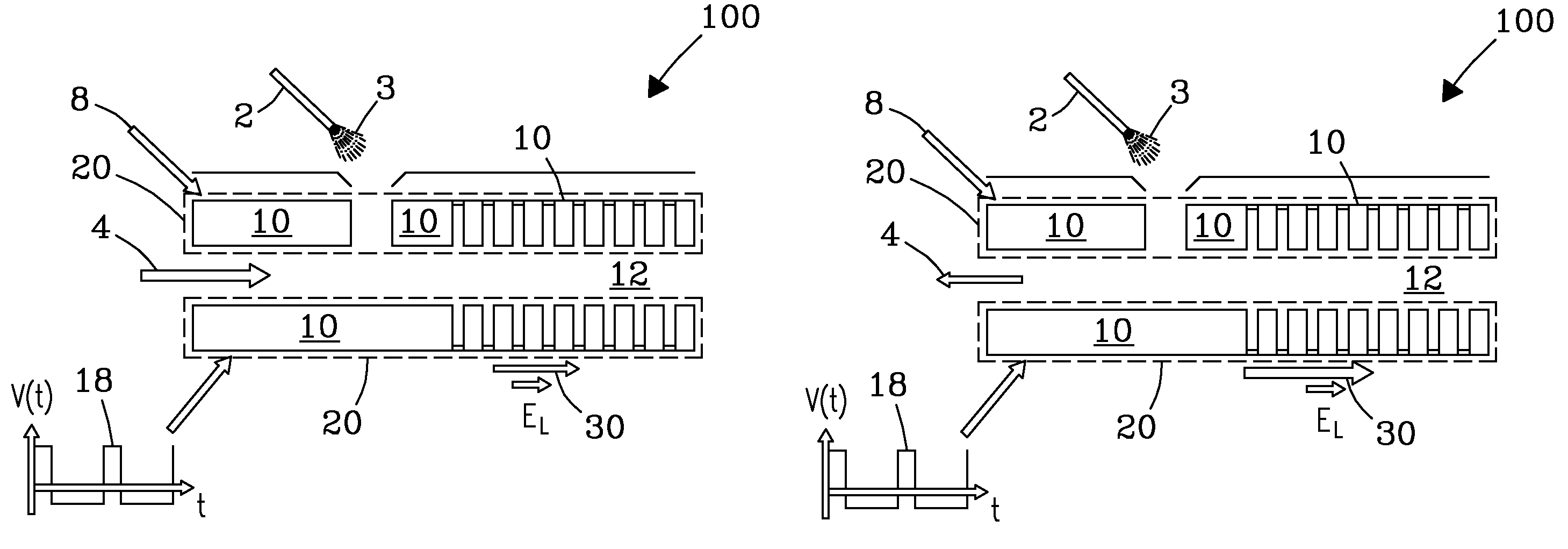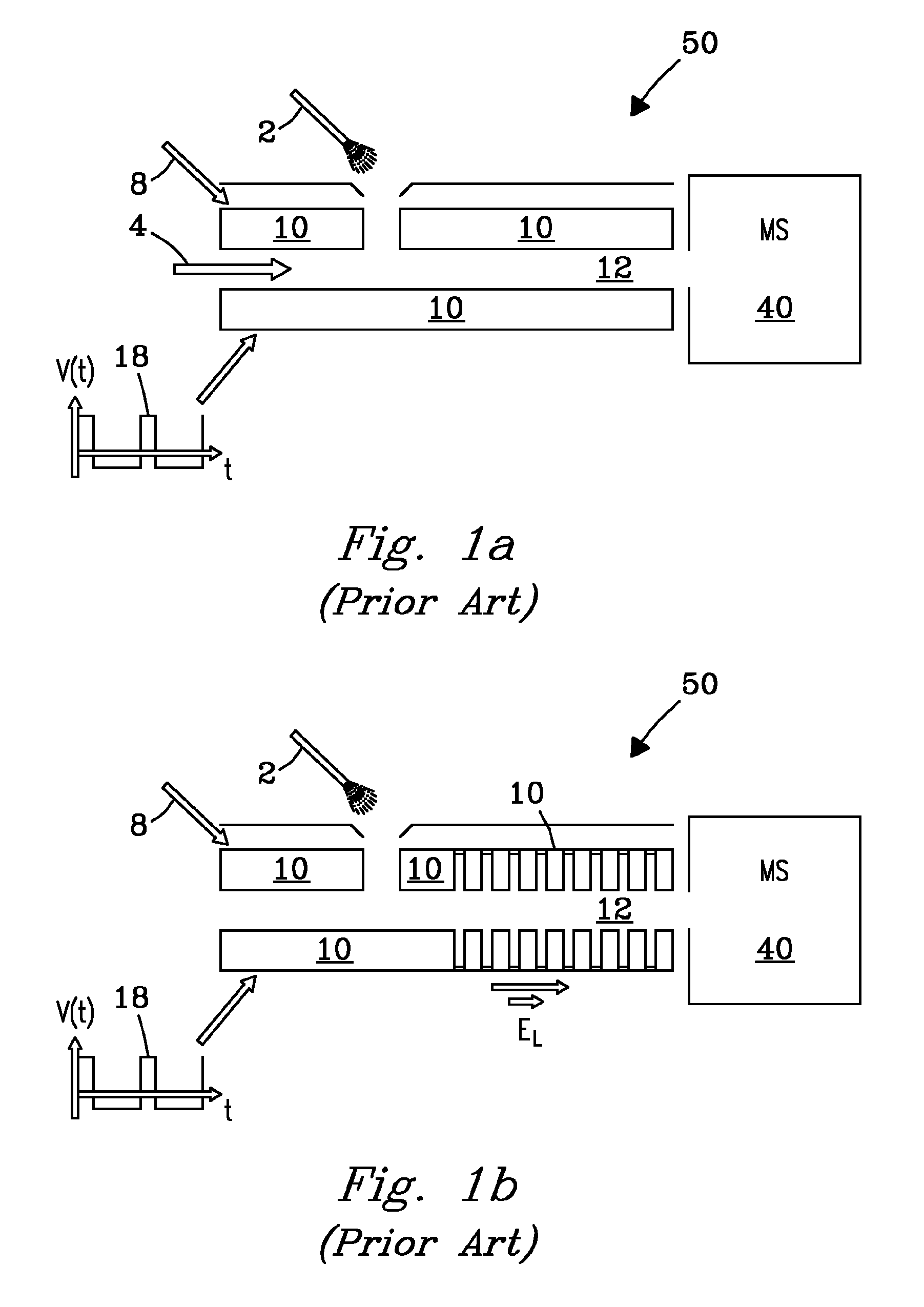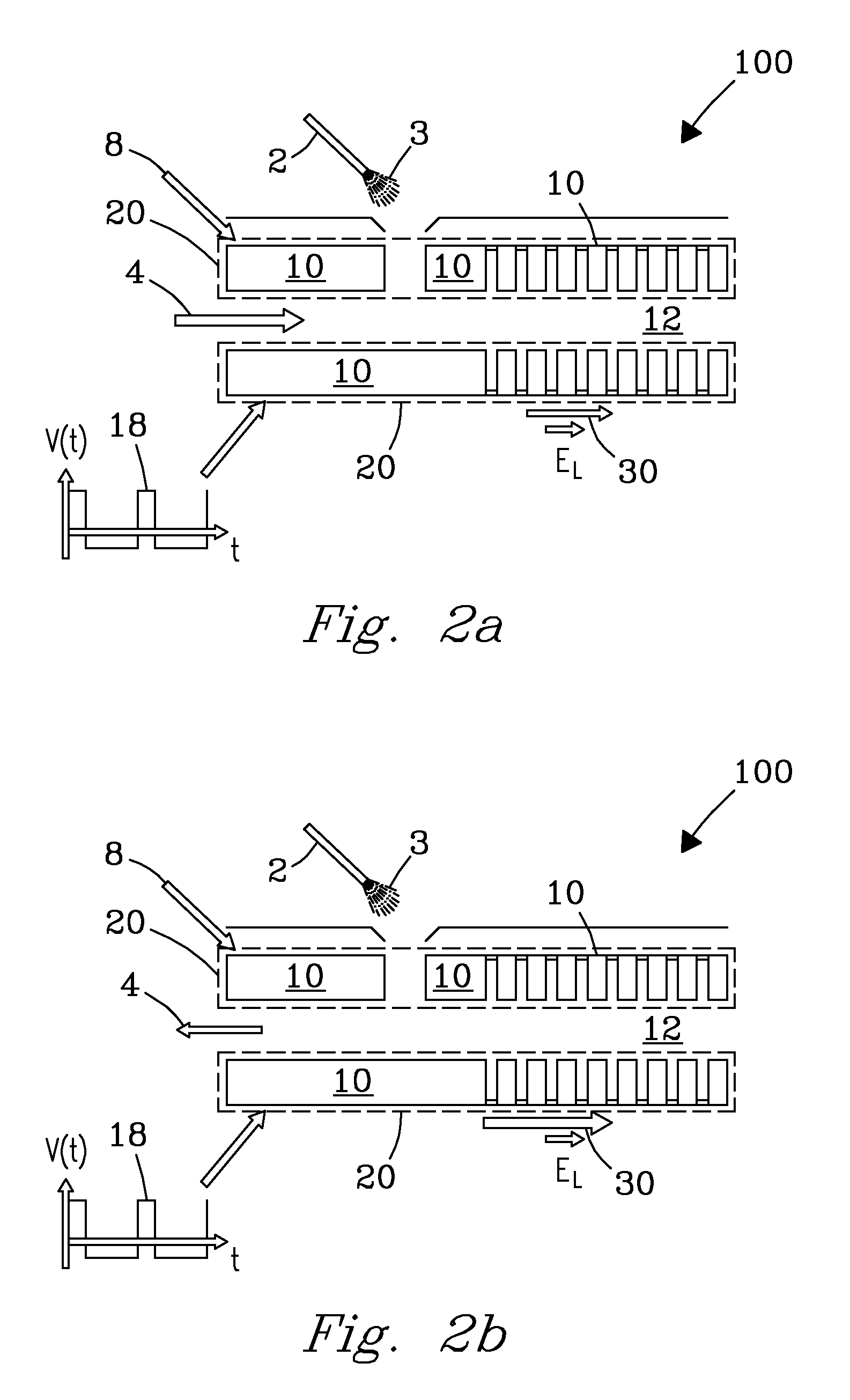Platform for field asymmetric waveform ion mobility spectrometry with ion propulsion modes employing gas flow and electric field
a technology of ion mobility spectrometry and gas flow, which is applied in the field of hybrid analytical platforms, can solve the problems of inherently involved ion loss, poor transmission, and substantial cost in time and resources, and achieve the effects of suppressing chemical noise, minimizing discrimination in planar gaps for ions of interest, and maximizing discrimination in planar gaps
- Summary
- Abstract
- Description
- Claims
- Application Information
AI Technical Summary
Benefits of technology
Problems solved by technology
Method used
Image
Examples
Embodiment Construction
[0024]The invention solves the problems with flow-driven FAIMS stages known in the art, where major losses of ions during their transmission through the analytical gap: (i) prevent effective use of other instrument stages in hybrid instruments without FAIMS filtering, and (ii) cause significant mobility-based discrimination. In particular, the invention enables operating various platforms comprising FAIMS, such as FAIMS / MS, FAIMS / DTIMS, FAIMS / TWIMS, FAIMS / DTIMS / MS, and FAIMS / TWIMS / MS, with FAIMS “on” or “off”. This allows for maximizing the specificity and reducing chemical background (with FAIMS on) and maximizing the sensitivity, throughput, and quantification accuracy without the distortions introduced by FAIMS (with FAIMS off). In another aspect, the invention controls and minimizes mobility-based discrimination of ions in FAIMS.
Asymmetric Waveforms
[0025]The waveform profiles for FAIMS include rectangular, bisinusoidal, clipped-sinusoidal, and their derivatives and superposition...
PUM
 Login to View More
Login to View More Abstract
Description
Claims
Application Information
 Login to View More
Login to View More - R&D
- Intellectual Property
- Life Sciences
- Materials
- Tech Scout
- Unparalleled Data Quality
- Higher Quality Content
- 60% Fewer Hallucinations
Browse by: Latest US Patents, China's latest patents, Technical Efficacy Thesaurus, Application Domain, Technology Topic, Popular Technical Reports.
© 2025 PatSnap. All rights reserved.Legal|Privacy policy|Modern Slavery Act Transparency Statement|Sitemap|About US| Contact US: help@patsnap.com



